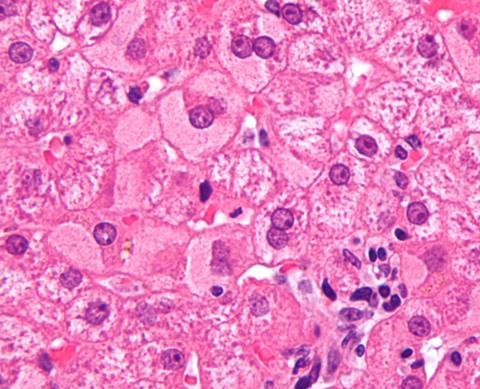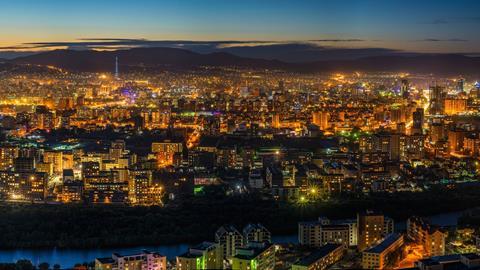On 28 July each year, World Hepatitis Day is observed globally; the day is held on the birthday of Dr Baruch Blumburg (1925-2011), a pioneer of hepatitis B disease and vaccine discovery. The ultimate goal of the day is to celebrate progress and get voices heard, to improve research, education, and treatment of the disease.
Hepatitis describes liver inflammation caused by a range of viruses and non-infectious agents such as alcohol. There are five main types of hepatitis (A-E), with hepatitis B and C most concerning, causing 8000 new infections each day. Hepatitis is a preventable disease, yet it is estimated that more than 350 million individuals are affected globally, with over 1 million deaths annually because of the infection. The World Health Organisation outlined in their 2016-2021 Global health strategy on viral hepatitis their aim to reduce new hepatitis infections by 90% and deaths by 65% by 2030. Their report suggests improved vaccinations, diagnostics, medicines, and education could prevent 4.5 million premature deaths in low-middle-income countries (LMICs).
The five main types of hepatitis differ slightly in their aetiology and transmission modes. But what are the differences which make them unique?
Hepatitis A Virus
Hepatitis A virus (HAV) causes mild to severe illness. It is highly contagious and is transmitted through contaminated food, water, or person-to-person contact. HAV spreads through contaminated faecal particles, which, when entering food and water supplies, can cause rapid spread of disease. This type of hepatitis is commonly found in parts of Asia, Africa, and Central and South America. Along with those populations, some groups are at greater risk globally, including individuals who inject drugs, gay and bisexual men who have sex with men (GBMSM), and those who travel to high endemicity areas. Whilst a vaccine is available for HAV globally, we still see over 7000 deaths annually associated with this infectious disease.

Hepatitis B Virus
Hepatitis B virus (HBV) causes acute and chronic liver disease. This virus can transmit from mother to child during childbirth (vertical transmission), bodily fluids and unsafe injectables (horizontal transmission). There are estimated to be over 1.5 million new infections each year and ~800,000 deaths annually via liver cancer and cirrhosis due to HBV. The highest burden of HBV is in the Western Pacific, with 116 million chronically infected individuals annually. Of the total number of cases globally, around 1% are coinfected with HIV. For instances of HIV, Tenofovir can be used as treatment which has also been shown to be effective against HBV.
Hepatitis C Virus
WHO estimated that 58 million people live with HCV and 1.5 million are newly infected with hepatitis C Virus (HVC ) annually. It is transmitted via blood-to-blood contact. The incubation period of HCV widely varies from 12 weeks to 6 months. Eastern Mediterranean and European Regions are mostly impacted by HCV, with 12 million cases annually. Treatment is available, and there is a cure; a daily oral dose of antiviral medication is taken for 8-12 weeks. In 2019, 9.4 million people received treatment for chronic HCV.

Hepatitis D Virus
Discovered in 1977, Hepatitis D Virus (HDV) occurs exclusively in those with HBV and is present in 5% of the HBV population. HDV requires HBV to help the virus function inside an infected individual. This is argued to be the most severe form of chronic viral hepatitis due to the rapid progression towards liver-related death and hepatocellular carcinoma observed in cases. Those most at risk of contracting HVD are indigenous populations, recipients of haemodialysis and people who inject drugs. Whilst there is no HDV vaccine, HBV vaccinations can prevent viral infections of HDV.
Hepatitis E Virus
There are 20 million HEV infections worldwide, with ~3.3 million symptomatic cases yearly. There are four types of HEV: genotypes 1, 2, 3 and 4; genotypes 1 and 2 are only found in humans. Genotypes 3 and 4 circulate predominantly in animals, including pigs, wild boars, and deer, without causing any disease; however, there are instances of human infection. HEV is common in LMICs circulating via the faecal-oral route, where adequate sanitation and hygiene are limited. Faecal matter containing the virus can contaminate water supplies leading to a transmission cycle of HEV. There are no specific treatments for acute HEV; however, in March 2022, Médecins Sans Frontières and South Sudan’s Ministry of Health launched the first HEV vaccination outbreak response in Bentiu’s internally displaced persons’ camp.

Whilst the types of Hepatitis above are routinely documented and recorded, last year, non-A-E viral hepatitis affected a new population- young children. These unexplained incidents led to over 1000 probable cases across 35 countries, with 22 reported deaths. These cases began in April 2022 in the UK and were reported in Europe and the USA over a short period of time. Of the 46 individuals requiring liver transplants, 15 were from the UK. The national authorities rapidly responded to these unusual cases with epidemiological surveillance, serology testing and toxicological investigations to better understand the problem. Determining the cause of such infections was difficult however, it was suspected that human adenovirus had the potential to be the causative agent of this hepatitis outbreak.








No comments yet